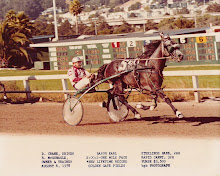Wrong Date on Taylor $1 Edge
By Numismatic News
Discovery of a Zachary Taylor Presidential dollar with a 2010 date instead of 2009 has caused the U.S. Mint to recall 700,000 of the Taylor dollars already in the process of being released in hopes of preventing others from getting into public hands, Numismatic News error specialist Ken Potter reports.
Numismatic Guaranty Corp. announced Feb. 20 that it had authenticated a Zachary Taylor Denver Presidential dollar coin bearing the date 2010 on its edge instead of the correct 2009.
This is the first reported Presidential dollar with the wrong date. It might be the only one. The authentication process was overseen by NGC special consultant and mint error expert, David J. Camire.
NGC said, “This error coin was included in a roll of 2010-D Native American dollar coins that were purchased using the U.S. Mint’s Direct Ship Program. Since only this lone Zachary Taylor dollar was found in the roll, one can speculate that the same machinery was used to strike 2010-D Native American dollars after completing a run of 2009-D Zachary Taylor dollars. A coin was left behind somewhere between striking and edge lettering (and) became mixed with Native American dollars headed for the edge lettering process, and was thus inscribed with the wrong date.
“Because of where this coin was found, it does not suggest that a large run of error coins were made and, therefore, this type of error coin may remain a significant rarity.”
When asked what the value might be, Potter replied, “That’s a tough question.” If it remains one of a kind, he said, “I think it could be $10,000.”
NGC explained the Presidential dollar coin striking process this way, “The date on each Presidential dollar coin appears on its edge and is applied by an edge lettering die after the obverse and reverse are struck with a blank collar. Because edge lettering is an additional and subsequent step, it has been the source of several types of novel mint error coins. Most common among these errors is partial edge lettering, which occurs when a coin gets hung up in the edge lettering machine and part of the edge lettering is not impressed. Another error is missing edge lettering; that error occurs when a coin misses the edge lettering step entirely. A third error type that has been encountered is doubled edge lettering, which is created when a coin passes through the edge lettering machine twice.
“The error coins that result from a cross pollination of Presidential dollars and Sacagawea or Native American dollars are unquestionably some of the most exciting error coins coming out of any mint today,” Camire said.

